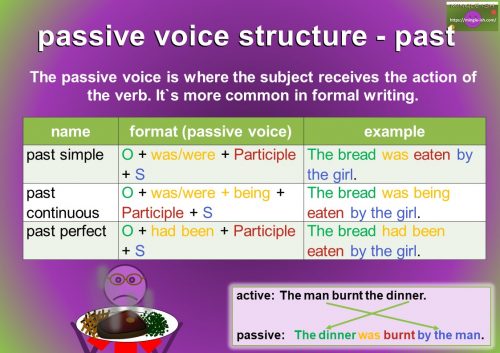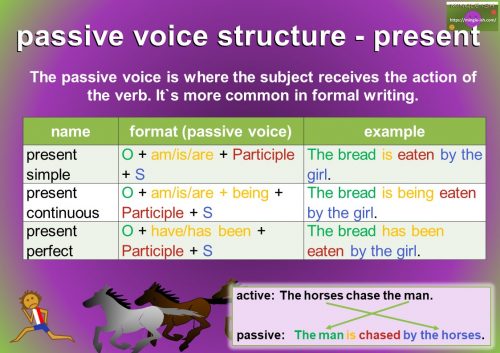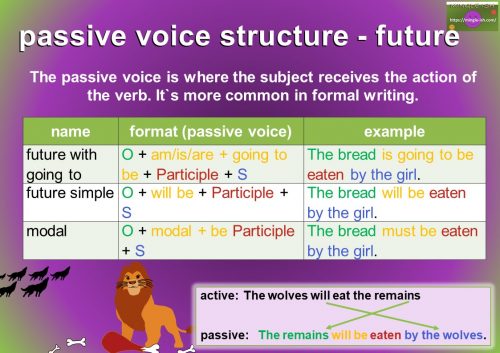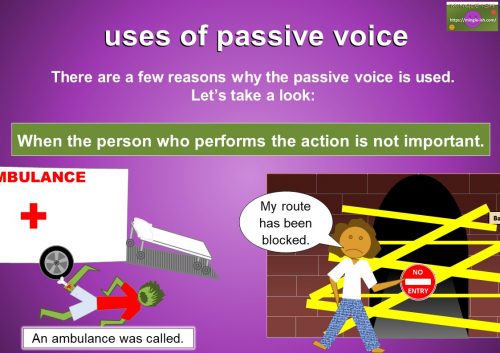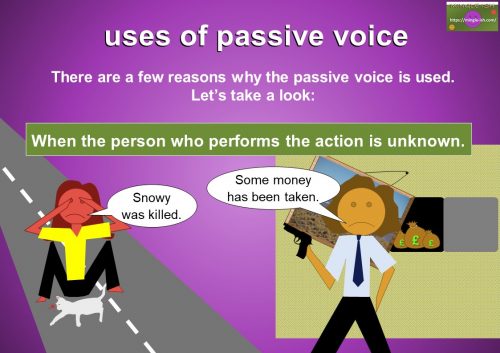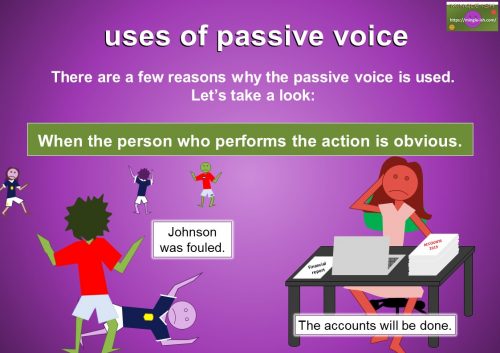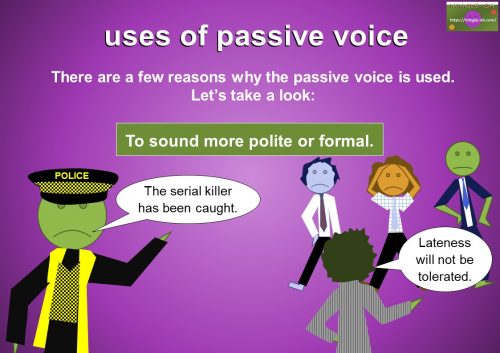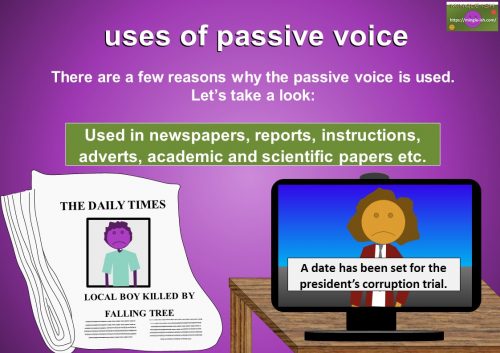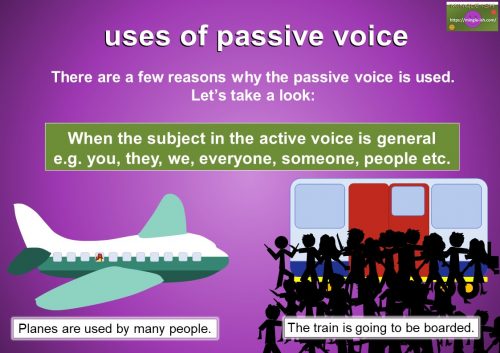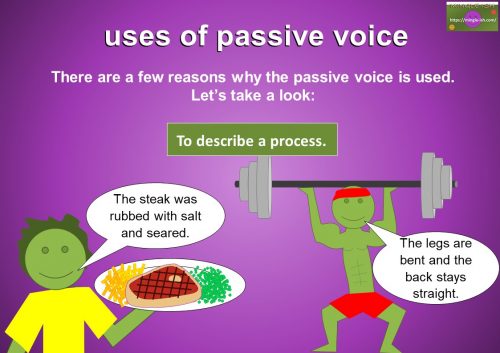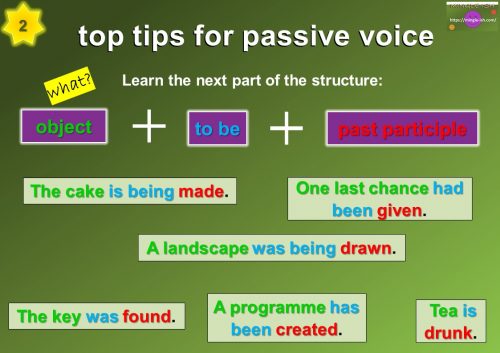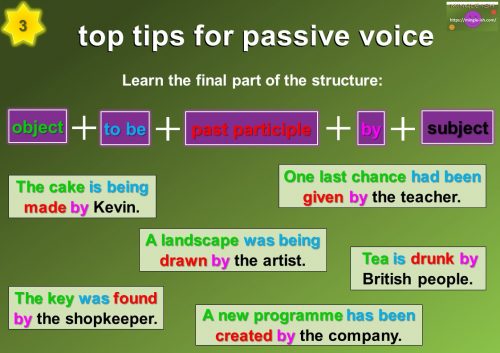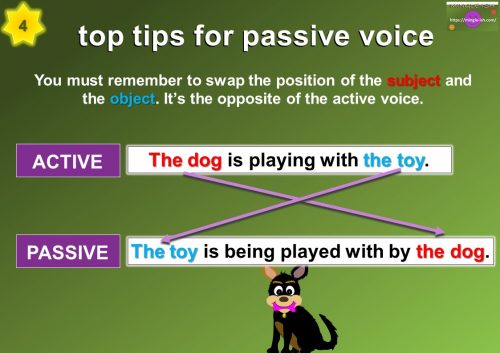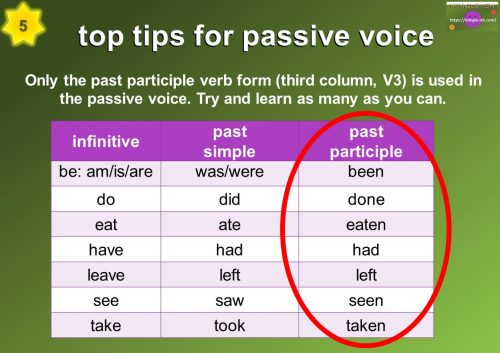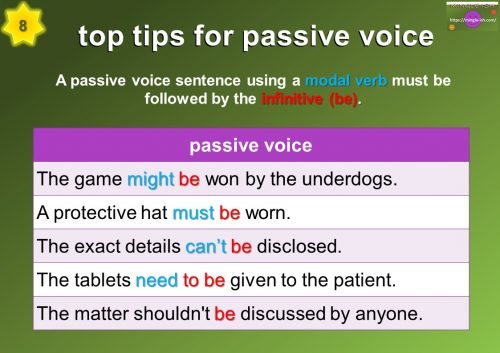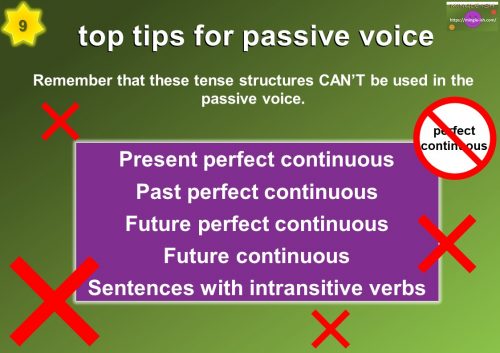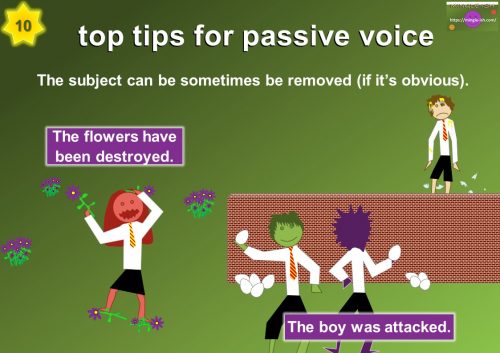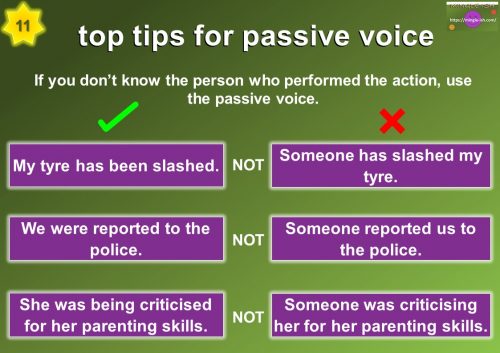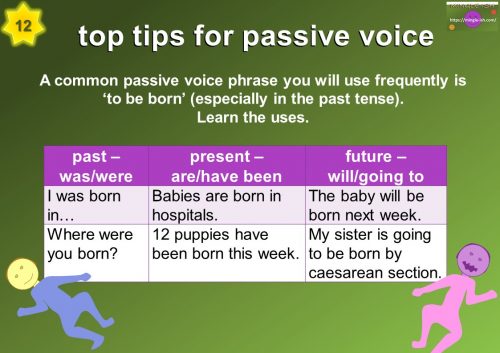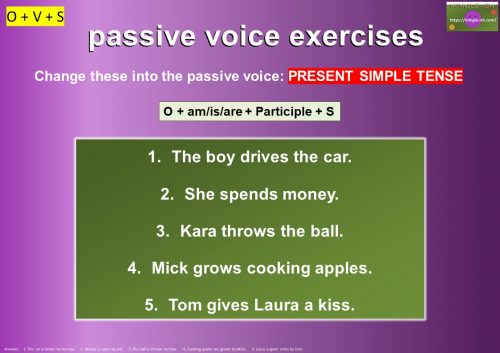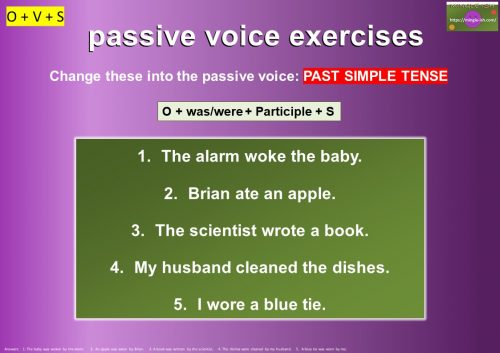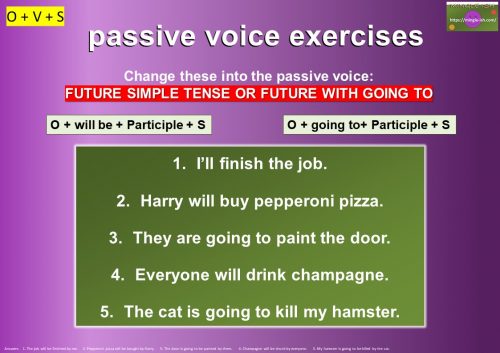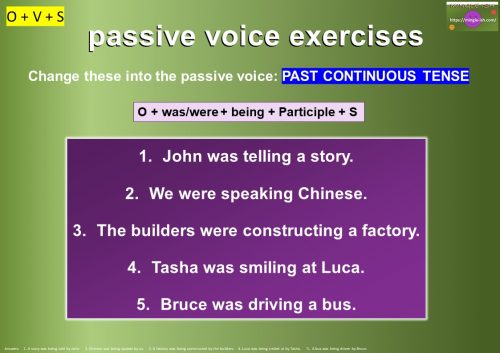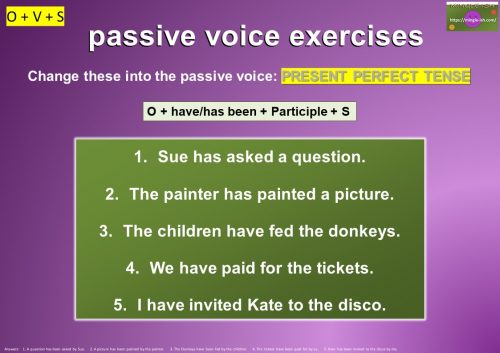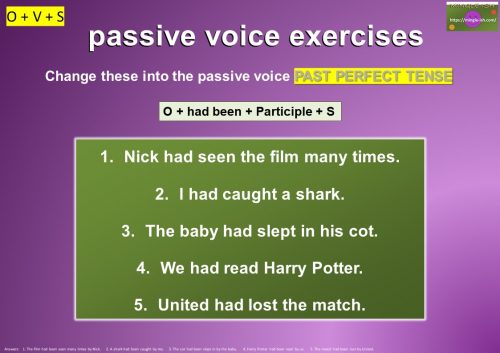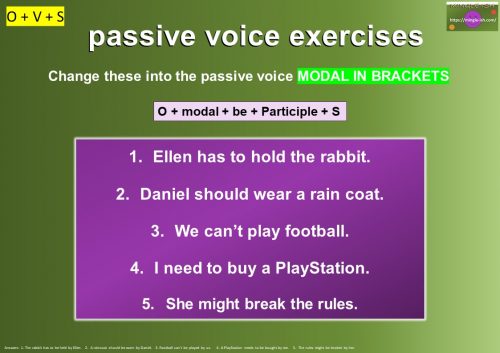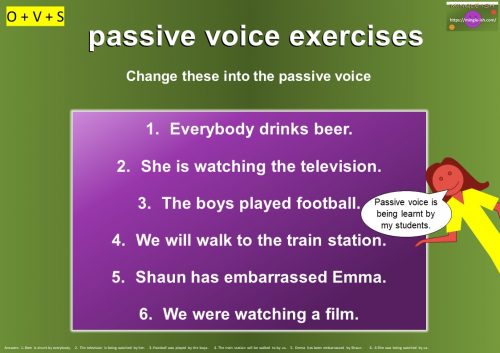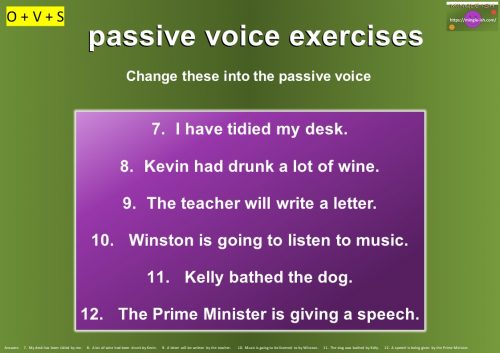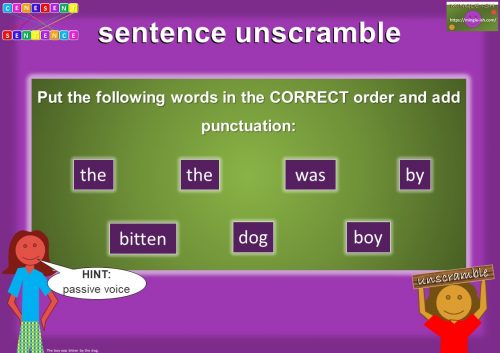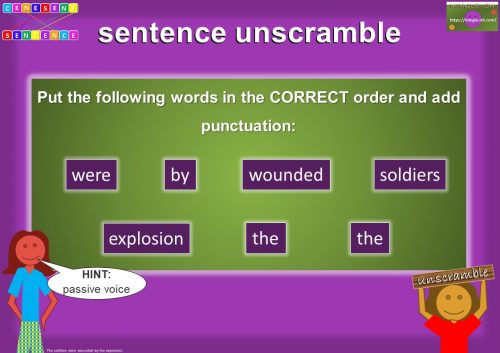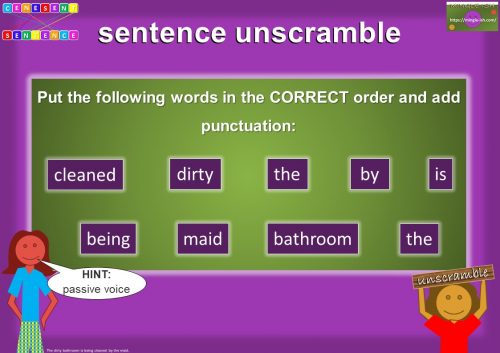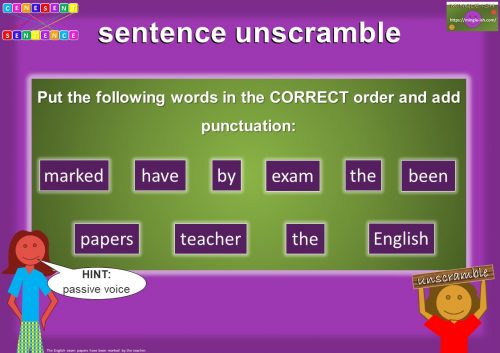When we speak, we usually speak in the active voice. For example:
- I eat pancakes.
- She plays tennis.
- Tony writes letters.
In the active voice, the object receives the action of the verb. The passive voice is a type of sentence where the subject receives the action of the verb. The roles are reversed.
**Hint: You’ll need to know the past participle (third column verbs) for the passive voice.
structure of passive voice
The structure of the passive voice is different to the normal sentence structure you’ve learnt. I’ll give you an example:
Active voice = S + V + O = The dog chews the bone.
The bone is the object and it receives the action.
Passive voice = O + V + S = The bone is chewed by the dog. The subject and object have changed places and you may have also noticed that there is an auxiliary verb in there too.
It looks easy, right? Well, not that easy… the passive voice can be applied to many of the different tenses we have in English (but not all of them). Once you’ve learnt those, you’re on your way to cracking the passive voice.
Take a look at the pictures below for the different tense structures of the passive voice.
10 reasons for using passive voice
So, why do we use the passive voice and why is it important? The passive voice is used to give importance to the person/object that encounters the action (not the one that performs it). The most important person/object becomes the subject. For example:
– The blaze killed 55 people. (focus is on the fire)
– 55 people were killed by the blaze. (focus is on 55 people)
The good news is that it isn’t very common in everyday speech. We tend to use the active voice when speaking informally. However, I does have his uses.
Take a look at the slides below to see 10 uses of the passive voice.
12 top tips for learning the passive voice
I’ve given you quite a lot of scary information to mull over and here is some more. I’ve pulled out some of the key points of the passive voice for you to learn.
Check out these 12 top tips for learning the passive voice.
passive voice exercises
You’ve learnt the passive voice, now it’s time to put your knowledge to the test. We’ll start with some easy ones then gradually get more difficult.
Here goes…
Change the following sentences into the passive voice (I’ve given you the tense in these ones!). The correct answers are at the bottom of the slide.
